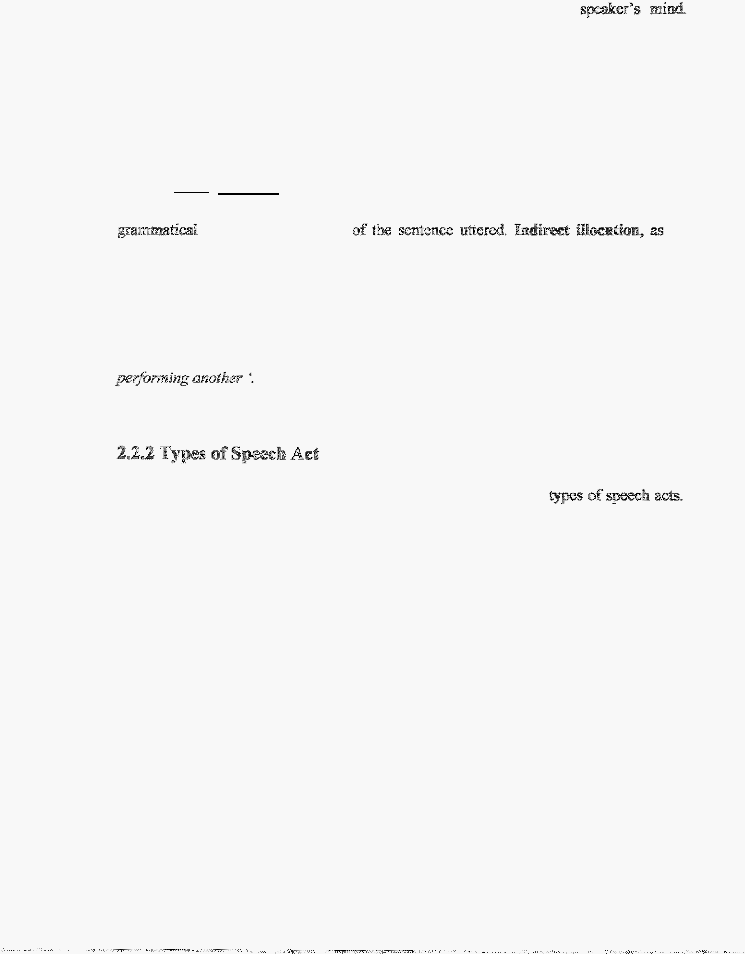
As
explained
above,
i!!ocutionary
is
the
intention
Sometimes one
urreranee
may have
several il!ocutionary
acts.
For exan:1ple
when one
lit+
..ern
"Can you pass the saitT',
or she may either h1quire the addressee's abilitv in
pas!;ing the or asking addressee to pass the salt. Hurford and Heasley (1994:259)
c::md;. des thls pheoomena by distinguish direct
i!locuti.on and indirect
inlllcnniln.
illoc:.rtion
n:;ost directed
by
a
reading
the
and voca.b lary
term :SUJ e:s'""' is
any
further il!ocution the
utterance may
have or bey(md the
literal
&l :ar;i<' g.
Based on wr.at Searle (1975:60)
in
Brown&Yule (1993:232)
indirect
iHilcuiion
is
'cases in
whir-n
one
illocutionary
act
rs performed
indirectly
by
·wcy
Searle (1977:34} as qua:ted in Mey (1994:163) classified 5
are repre..'ierr!.atives, directives,
comn1issivcs, expressives,
and declarlltions.
·· 2.2.2.1Rep:rese'llltatives
(Assertives)
This
type
speech act
ro inform others (either listener or reader) therefore it
s!tmuld not mislead them. It should
the
and
it
is concerned
pg.164).
instarce: s".ate
this house bdongs
ro
.
The utter&"!ce is subjcete<!
tc investigation to sesrch for its truth or falsitv. Common verbs
speech act arc:
state, boa. t. complain, claim, report, 111arn (that).
mark
type
of